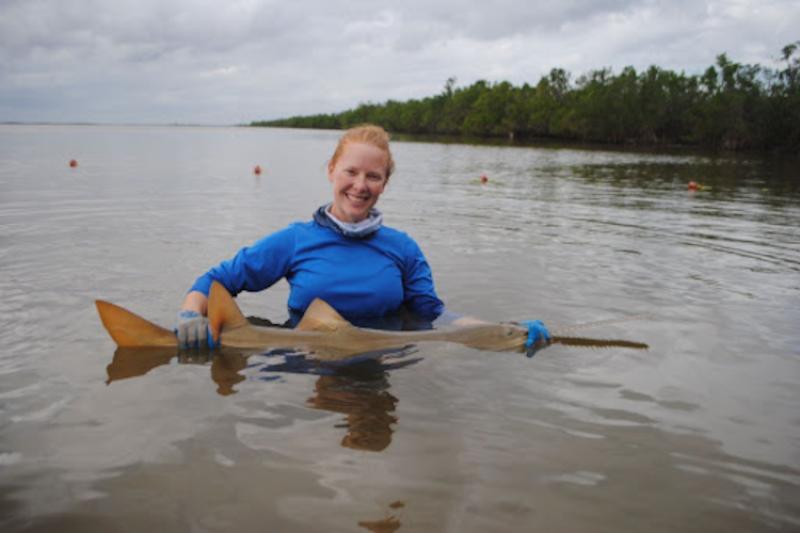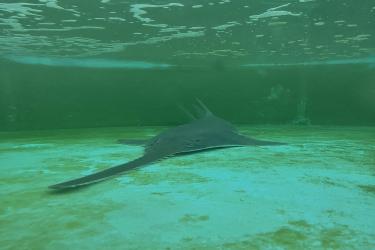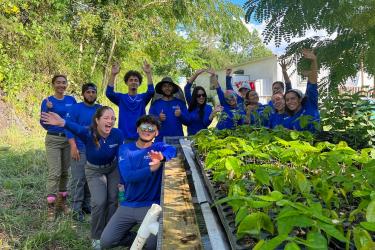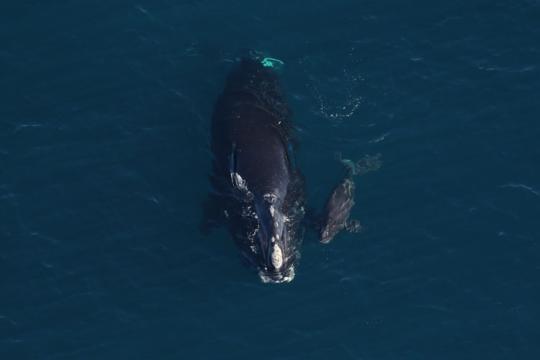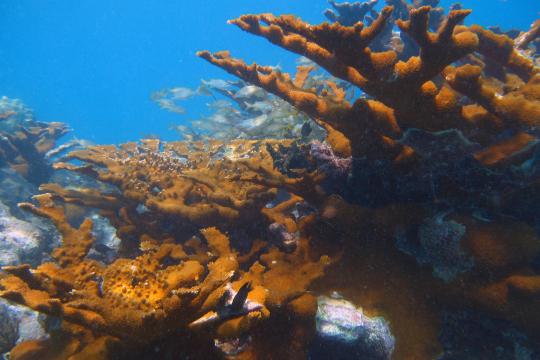Where did you grow up?
I grew up in Mt. Vernon, Illinois.
Where did you go to school and in what subject did you get your degree(s)?
I earned my bachelor's degree in Integrative Biology from the University of Illinois Urbana-Champaign in 2006 and my Doctorate in Marine Science from the University of South Alabama in 2015. For my dissertation, I researched movement ecology and trophic dynamics of bonnethead sharks and red drum.
How did you come to work at the Southeast Fisheries Science Center?
I first joined the Southeast Fisheries Science Center in Panama City on a postdoctoral Research Associateship awarded by the National Research Council. Now, I continue work at the science center as an Assistant Scientist with the Cooperative Institute for Marine and Atmospheric Studies at the University of Miami Rosenstiel School of Marine and Atmospheric Science.
What do you do at the science center?
My research focuses on the biology and ecology of sharks, rays, and bony fish. I collect and analyze data on trophic ecology, habitat use, movement ecology, and life history for many species in the Gulf of Mexico and U.S. South Atlantic. Another aspect includes analytical and modeling components of available data. A large portion of my research supports the recovery of endangered smalltooth sawfish and I am currently leading research to update age and growth information of the species.
International Sawfish Day is celebrated on October 17, 2021. What do you want readers to know about smalltooth sawfish?
Smalltooth sawfish is one of five species of sawfishes worldwide—all are listed as endangered under the U.S. Endangered Species Act. It is the only species currently found in United States waters, primarily in south Florida. Although populations have declined from historical levels, the research of the Smalltooth Sawfish Recovery Implementation Team indicates that we are starting to see signs of recovery for the species.
A fun fact about sawfish: during birth, they are born rostrum (saw) first. They also have fully developed rostral teeth that are covered by a hardened gelatinous material to protect the mother during the birthing process. This extremely cool fact was revealed when we witnessed the first documented wild birth of smalltooth sawfish in 2016!
What do you like most about your position?
I enjoy the diversity of the research in which I participate. I am fortunate to be a primary investigator on field research in Everglades National Park and around Panama City, Florida. I have the opportunity to collaborate on a multitude of projects with fantastic colleagues tagging sharks, rays, and endangered species, many of which few people are fortunate to ever encounter. I also participate in stock assessments that evaluate the status of shark populations, an important part of what we do at the science center. It is rewarding to see data that I collect in the field be used for assessments and management decisions—it brings everything full circle.
What do you like to do outside of work?
Outside of work, I enjoy spending time in nature. My favorite ways to relax and enjoy life include hiking, scuba diving, kayaking, camping, gardening, and traveling around the world!
